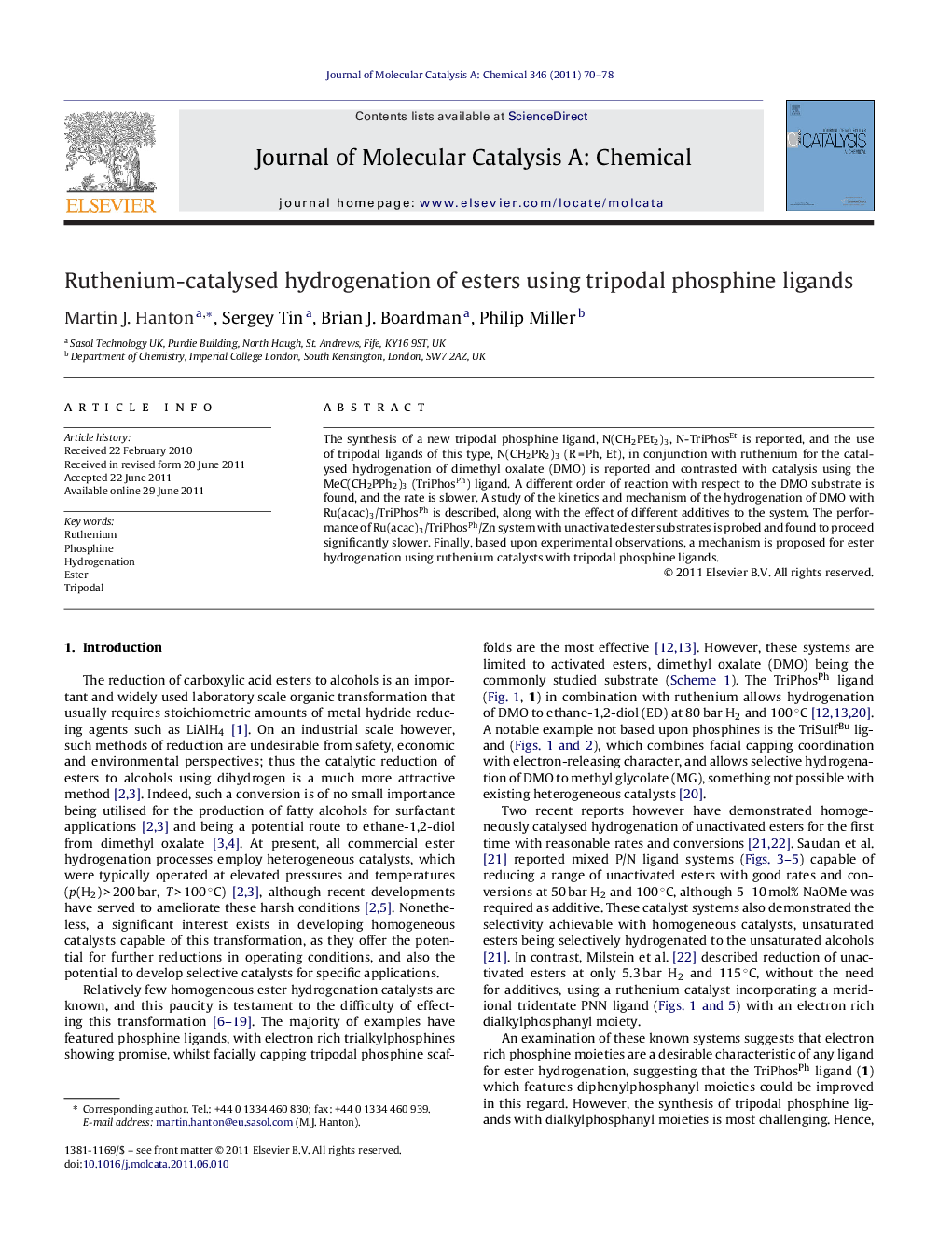| Article ID | Journal | Published Year | Pages | File Type |
|---|---|---|---|---|
| 66336 | Journal of Molecular Catalysis A: Chemical | 2011 | 9 Pages |
The synthesis of a new tripodal phosphine ligand, N(CH2PEt2)3, N-TriPhosEt is reported, and the use of tripodal ligands of this type, N(CH2PR2)3 (R = Ph, Et), in conjunction with ruthenium for the catalysed hydrogenation of dimethyl oxalate (DMO) is reported and contrasted with catalysis using the MeC(CH2PPh2)3 (TriPhosPh) ligand. A different order of reaction with respect to the DMO substrate is found, and the rate is slower. A study of the kinetics and mechanism of the hydrogenation of DMO with Ru(acac)3/TriPhosPh is described, along with the effect of different additives to the system. The performance of Ru(acac)3/TriPhosPh/Zn system with unactivated ester substrates is probed and found to proceed significantly slower. Finally, based upon experimental observations, a mechanism is proposed for ester hydrogenation using ruthenium catalysts with tripodal phosphine ligands.
Graphical abstractA study of carboxylic ester hydrogenation with ruthenium and tripodal phosphine ligands is described.Figure optionsDownload full-size imageDownload high-quality image (34 K)Download as PowerPoint slideHighlights• The synthesis of a new tripodal phosphine ligand, N(CH2PEt2)3, N-TriPhosEt. • Ru-catalysed ester hydrogenation using the tripodal ligands N(CH2PR2)3 (R = Ph,Et). • The effect of additives on Ru–TriPhosPh-based ester hydrogenation. • The kinetics of ester hydrogenation with Ru and tripodal phosphines. • Contrasting ester hydrogenation with TriPhosPh and N-TriPhosPh.
